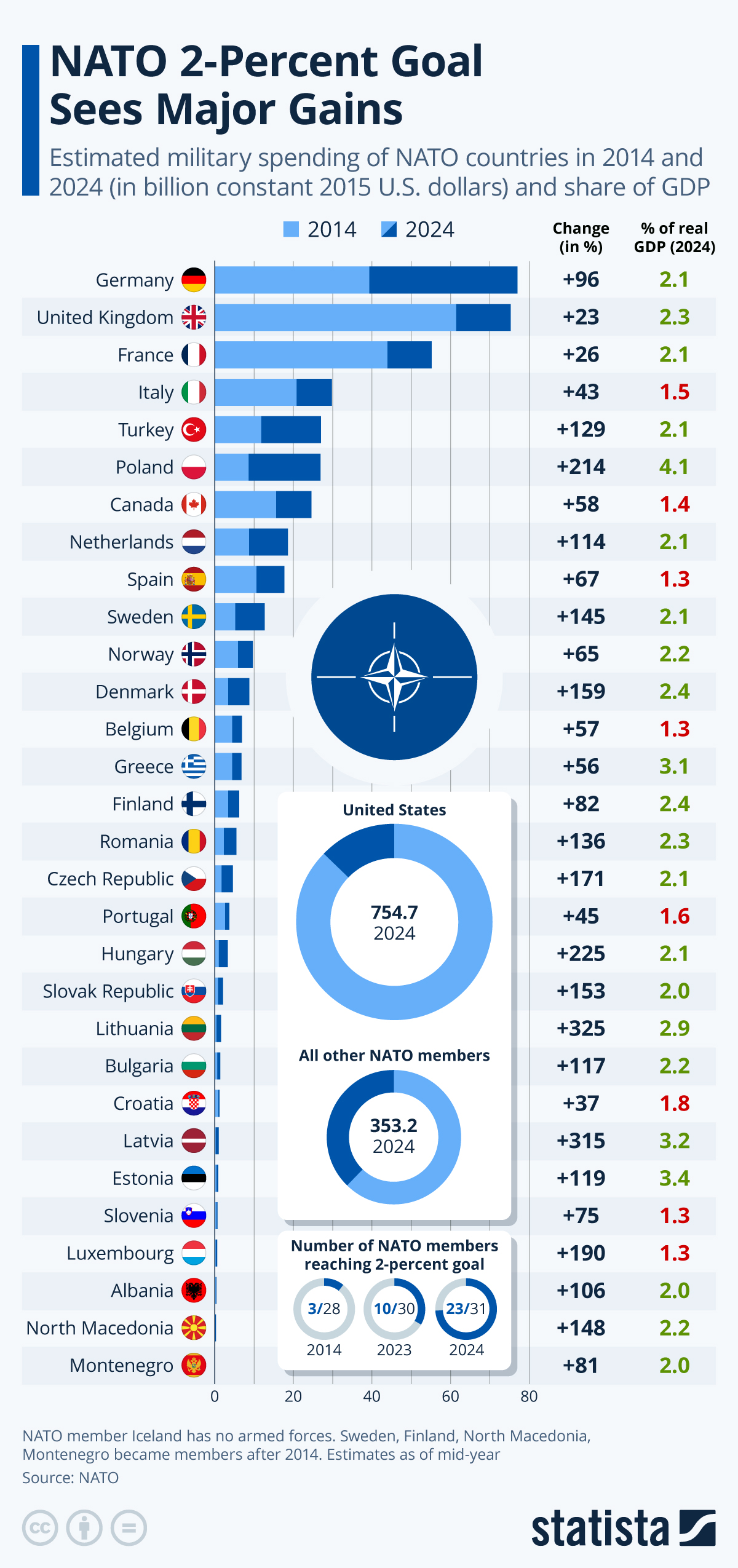Where NATO Defense Expenditure Stands
The concept that NATO countries should spend 2 percent of their GDP on defense was debuted in 2014 and by 2024, members of the military alliance should technically have “moved towards” or beyond this goal.
While the definition as agreed upon during NATO’s Wales summit 10 years ago is vague, the 2-percent target has nevertheless been considered a hallmark of NATO’s success as well as a point of contention within the organization and in public discourse.
However, as Statista’s Katharina Buchholz reports, according to data released as of July 1, the number of NATO countries which have reached or exceeded the spending level was only 11 out of 30 members with armed forces.
You will find more infographics at Statista
The list encompasses the U.S., the UK, Poland, Greece, Romania, Hungary, Slovakia, Estonia, Latvia and Lithuania as well as new member Finland, showing overall that Eastern European nations have been more attuned to military threats in Europe arising again. While this means that only around a third of members are reaching the 2024 goal, the number was up from nine as of mid-2022.
New additions are Romania and Hungary, where military spending as compared to GDP rose substantially in 2023 opposite 2022.
Despite recent gains, larger and wealthier NATO members stayed behind the goal – often by a large margin. This includes Germany, Canada, Italy and Spain.
Croatia and France, which had previously hit the 2-percent goal, stayed slightly below in 2023. The next closest to hitting the threshold were more of NATO’s newer members, Montenegro and North Macedonia at 1.87 percent of GDP in defense spending each, followed by Bulgaria, Luxembourg and the Netherlands.
According to its Secretary-General Jens Stoltenberg, NATO is currently undergoing “the biggest overhaul of collective defense and deterrence since the Cold War” after the organization has emerged as the chief supporter of Ukraine in its defense effort against a Russian invasion.
But even before war on the European continent became a reality again in 2022, tensions had been running high about the state of NATO’s military infrastructure as most European nations had adopted a lackluster approach to defense spending in peace times.
U.S. President Donald Trump in 2018 brought the issue to the forefront once more as he criticized a number of NATO member states, especially Germany, for not making enough enough effort to meet the 2-percent-of-GDP spending threshold.
Tyler Durden
Sun, 01/14/2024 – 07:35
via ZeroHedge News https://ift.tt/W4ZbgrT Tyler Durden
